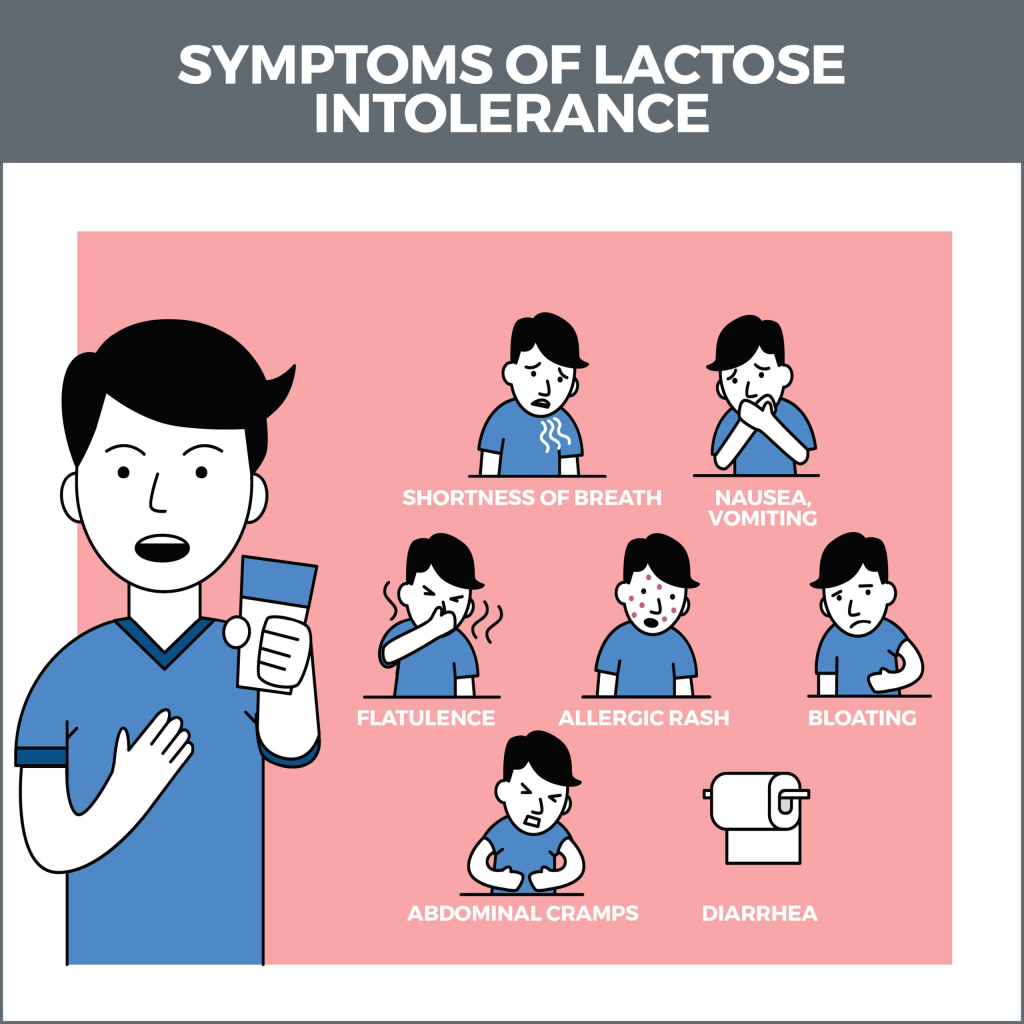Feeling bloated, gassy, or uncomfortable after drinking milk or eating ice cream? You’re not alone. Lactose intolerance affects millions worldwide, causing digestive discomfort when dairy is consumed. Whether you’ve just noticed symptoms or are looking to fine-tune your diet, this guide covers everything you need to know—from causes and signs to safe foods and lifestyle tips.
What is Lactose Intolerance?
Lactose intolerance is the inability to properly digest lactose, a natural sugar found in dairy products. This happens when your body doesn’t produce enough lactase, the enzyme needed to break down lactose in the small intestine. Undigested lactose passes into the colon, causing digestive issues like bloating, cramps, and gas.
It’s different from a dairy allergy—lactose intolerance is a digestive issue, not an immune response.
Common Signs of Lactose Intolerance

Image Credit: Gastro MD
Symptoms typically appear 30 minutes to 2 hours after consuming dairy and may include:
- Bloating
- Abdominal cramps
- Gas
- Diarrhea
- Nausea
- Rumbling or gurgling stomach
- Sometimes constipation (less common)
What Causes Lactose Intolerance?
- Genetics – It’s more common in certain ethnic groups (like Asians, Africans, and Native Americans).
- Age – Lactase production tends to decrease as we age.
- Medical conditions – Illnesses like celiac disease, Crohn’s disease, or gastrointestinal infections can reduce lactase production.
- Injury or surgery – Damage to the small intestine can also trigger lactose intolerance.
Foods to Eat and Avoid Table
| Foods to Eat (Lactose-Free/Low-Lactose) | Foods to Avoid (High in Lactose) |
|---|---|
| Lactose-free milk | Cow’s milk (whole, skim, etc.) |
| Hard cheeses (cheddar, parmesan, Swiss) | Soft cheeses (ricotta, cream cheese, cottage cheese) |
| Plant-based milks (almond, oat, soy, coconut) | Ice cream and frozen yogurt |
| Coconut yogurt or soy yogurt | Regular yogurt |
| Butter alternatives (olive oil, coconut oil, ghee*) | Butter |
| Dairy-free creamers | Cream and half-and-half |
| Sorbet | Milk chocolate |
| Eggs | Cream soups and chowders |
| Fruits & vegetables | Some baked goods (contain hidden dairy) |
| Legumes, rice, oats | Milk-based sauces (Alfredo, cheese sauces) |
| Meats and tofu | Milkshakes and smoothies with dairy |
| Lactose-free protein powders | Whey and casein (unless labeled lactose-free) |
| Ghee (clarified butter with no lactose) | Custards and puddings |
Wellness Tips for Living with Lactose Intolerance
✅ Read labels carefully: Dairy is often hidden under terms like “whey,” “casein,” or “milk solids.”
✅ Try lactase enzyme supplements: These help digest lactose when taken with meals.
✅ Track your triggers: Everyone’s tolerance is different. Some can handle small amounts of aged cheese or yogurt.
✅ Prep meals at home: Control your ingredients and avoid surprise dairy.
✅ Get calcium elsewhere: Almonds, leafy greens, fortified plant milks, and supplements can help meet your needs.
✅ Stay hydrated: Digestive upset can lead to dehydration—drink water regularly.

